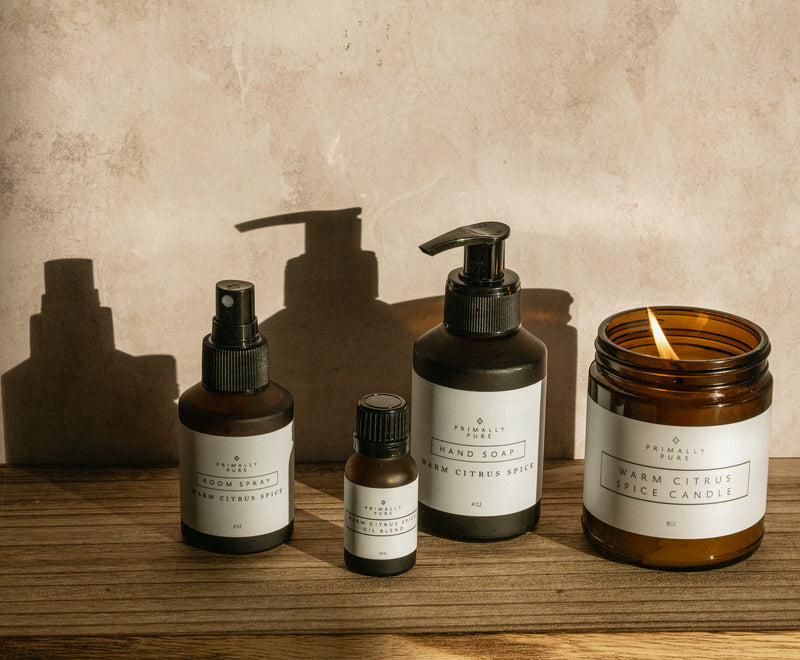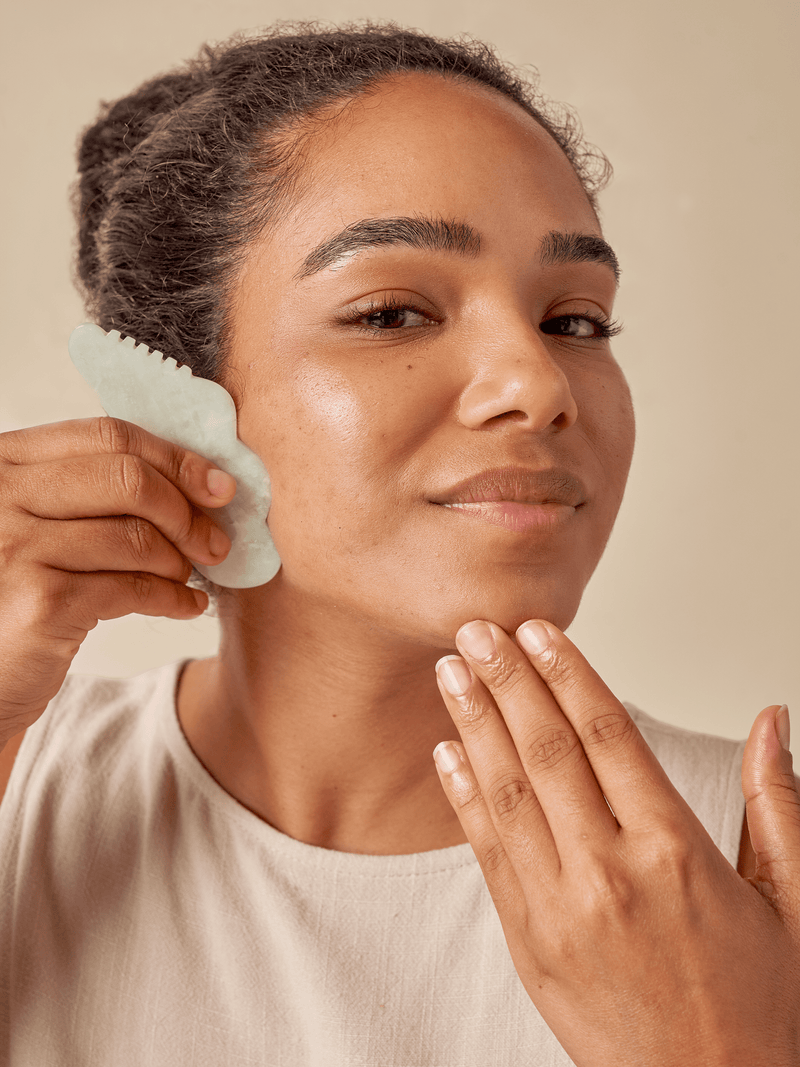3 Steps To Naturally Balance Your Mood (From A Functional Nutritional Therapy Practitioner)
Mood. A powerful word that can bring up many positive and negative associations. What does this word hold for you?
I define mood as an expression of your present biology, emotions, thought patterns, and circumstance, all rolled up into one. It’s a simple word that holds together a great many factors.
At times you do not have control over one or more of these mood-creating factors. Imbalances in the body, deeply engrained messages from your upbringing or even economic instability can mix to create moods that shift and shake you to the core. In this place, your perspective of life can alter. Everyday activities can become difficult or overwhelming. Interactions, even with those you love, can become draining or irritating. You can lose sight of your goals. You can even lose sight of yourself. Bottom line, you no longer feel like you.
This is not how you were intended to live, but this experience is often par for the course in this modern world. The depth and length of such an experience may vary from human to human, but please know that if you find yourself in such a state, you are not alone, many are walking alongside you. Yet, this does not have to be your story.
Let’s take a moment to reframe mood.
What if you saw your mood as an indicator? A gauge that could affirm health and balance or initiate self-evaluation and care. This understanding could give you back some control, offering you freedom within your experience.
If your mood indicates a need for self-evaluation and care, then the next consideration is your go-to support. What do you have on deck? An imbalanced mood calls for a robust toolkit!
Today’s conversation is all about filling up your toolkit – connecting you with natural tools to better understand, soften, relieve, and even prevent challenging experiences such as anxiety, overwhelm, discouragement, and depression. I am not here to give you an exact formula. You are a beautifully complex being and your rebalancing approach will need to honor and match your unique state.
Instead, I want to offer you direction, effective supports and hope wrapped up in 3 empowering steps.
Step 1: The Gentle Check-in
When you experience a shift in mood and are able to self-evaluate, use these 12 questions to check-in on the state of your body, mind, emotions, and environment.
These questions are meant to serve as a catalyst to uncover some of the factors contributing to your shift in mood. With this understanding, it becomes possible to begin taking steps to prevent the resulting mood shift or identify a need for further support.
Choose the form of expression that fits you best, written or oral. Find a safe quiet space and write out or verbalize, out loud, your responses to these questions as well as any ensuing thoughts. If any part of this process feels challenging, then I highly recommend connecting with a trustworthy practitioner or therapist for support.
Body
- How much water have I sipped in the last 24 hours?
- How many hours of solid sleep did I enjoy last night? The past 7 nights?
- What’s the pace and depth of my breath?
- How much physical movement and natural light have I enjoyed today? The past 7 days?
- How much protein have I eaten in the last 7 days to sustain my neurotransmitter levels?
- Have I taken a round of antibiotics or started a new medication in the past 12 months that might have altered my gut microbiome and/or reduced my ability to absorb mood balancing nutrients?
Environment
- Have I experienced a change at work, in a relationship, or within my community? If so, what do I like or dislike about it? How is this impacting me? If I must remain in the situation, what practical steps can I take to cultivate a feeling of safety and ease within this new experience?
- Do I need to be alone or do I need to be in the presence of others to relax and recover? Am I prioritizing and blocking out space in my schedule to relax and recover in whichever way fits me best? If not, where in my week can I set aside time?
- When’s the last time I received a hug or touched another human? How can I invite this connection in regularly?
Mind & Emotions
- How have I been talking to myself lately? What is the main overriding theme of my thought patterns the past 7 days? Are these my authentic thoughts or is someone else’s voice or action driving my thoughts?
- How do I feel about my future? Is it certain or uncertain? What emotions or physical sensations arise when I ask myself this question?
- What or who is my source of peace? How can I return to this source daily?
Step 2: The Practice of Release
Once you’ve uncovered your contributing factors, it’s important to address them to the best of your current ability or enlist a trustworthy partner to aid you in the process. The next step is the release of internal tension that has resulted from these factors that are in or out of your control.
With each release comes the opportunity to reconnect with the original true you that resides outside of the present mood. This may sound woo woo, but humor me. Try one of these forms of release before moving on to step three. Your nervous system and brain need this grounding support. If this feels challenging, connect with a trustworthy practitioner or therapist for support.
Counting to Calm Breath Release
- Find a comfortable seated or horizontal position in a safe space. Close your eyes.
- Inhale through the nose slowly for the count of one, two, three. Pause at the top.
- Exhale through the nose slowly for the count of four, five, six, seven. Pause at the bottom.
- Continue cycling through this same rhythm.
- Begin picturing the numbers as you move through them. What color is number one? Does number two have a special design or unique shape? Are your numbers moving clockwise, like a roller coaster, up and down a temperature gauge, or in another formation with the breath?
- Allow your mind to focus on the numbers, moving through enough cycles to feel at ease and safe.
- Finish with three inhales through the nose followed by three exhales through the mouth.
Uplifting & Relaxing Facial Release
- Lower Face Release: Begin by placing and pressing your pointer finger knuckles at the spot just outside the lower part of your right and left nostrils. It may feel tender. Hold for 10 seconds. Then while maintaining contact, scoop under your cheekbones with your knuckles, following the bottom of your cheekbone all the way to the entrance of your ear canal opening – hopping up and over your cheekbone to reach the ear canal. Repeat 2 or more times.
- Upper Face Release: Beginning outside both nostrils again, simultaneously press with pointer finger knuckles for 10 seconds. Then with gentle but notable pressure move upward alongside the side of the nose until you connect with browbone. Hold. Then move along browbone just barely below your eyebrow until you reach the temples. Repeat 2 or more times, going as slow as needed as this may be tender.
- Finishing Release: Beginning at the furrow between the brow, glide the pointer finger knuckles, alternating, upward to the hairline. Expand outward by moving the knuckles from the eyebrow upward to the hairline, shifting left or right with each new movement till you reach the temples. Repeat 2 more times, going as slow as needed.
- Finish with three inhales through the nose followed by three exhales through the mouth.
Step 3: Whole Food & Supplemental Therapy
After moving through steps one and two, you are now ready to complete your holistic approach with the inclusion of whole food and supplemental therapies to naturally nourish your mood back into balance.
Whole Food Support
These foods carry robust sources of mood balancing nutrients. Focus on including as many of them as possible within your week, instead of favoring one or two categories. I strongly recommend adding a fat, a protein, and a carbohydrate from the list below to each of your meals for the ultimate balance.
- Dark Greens
- Root Vegetables
- Cooked & Fermented Cruciferous Vegetables
- Sea Vegetables
- Raw or Sprouted Nuts
- Whole & Cultured Dairy (for those that can tolerate dairy)
- Wild Fish & Seafood
- Grass-fed Meats, Poultry & Eggs
- Grass-fed Liver and Other Organ Meats
Supplemental Support
There are numerous supplemental therapies and tools ready and waiting to support you. I’ve highlighted a small sampling – focusing on my personal favorites and those that are most often successful within my practice.
Reflect back to the mood-creating factors that arose for you in step one. If you focused heavily on the body and environment section or find that you rarely notice a difference when taking supplements, then amino acid and mineral + vitamin therapy may be your best fit. If you found the mind and emotion section more relevant or you tend to have a strong reaction when taking supplements, look to seawater, herbal, and flower essence therapy. These are not hard and fast rules, just suggestions.
5 Effective Therapies
- Amino Acid Therapy works quickly and relieves significant symptoms. The components of dietary protein, amino acids are utilized by the body to create neurotransmitters. When there is a deficiency or imbalance, supplementing aminos can be a safe and effective alternative to medication.
- Mineral & Vitamin Therapy supplies nutrients the body is missing or struggling to extract, absorb, and utilize from the diet. Sourcing highly absorbable forms of minerals and vitamins is the key to seeing shifts in mood. Not all supplements are created equally, quality makes a very notable difference.
- Seawater Therapy has been in use for over a century, mostly in Europe, the Middle East, and South America. Discovered by French scientist, René Quinton, purified seawater from protected living plankton supplies nature’s complete spectrum of nutritional elements. The nutrients are all in the ideal ratios to optimize absorption and utilization. It is the ultimate foundational rebalancer and is a very gentle way to restore the body and mind. I always include this support when supporting clients.
- Herbal Therapy has been used for centuries to promote emotional, mental, and physical health. Each plant’s nutrient level and physical effect can vary depending on what part of the plant is harvested and its extraction process. Adaptogenic herbs are known for their ability to bring homeostasis and are the perfect go-to if you find you have symptoms of excess, depletion, or both when evaluating your mood’s factors.
- Flower Essence Therapy offers subtle, gentle energetic support. Falling under the herbal umbrella, the extraction process differs from standard herbs’ and brings forward the vibration or healing frequency of the plant, instead of the nutrient content. A beautiful therapy, it works incredibly well for sensitive souls, expectant mothers, babes, and kids, while still very much able to support those with stronger constitutions. This is the go-to support for effectively balancing emotions and shifting thought patterns. It can be safely taken alongside any medication or other supplemental support as there are no contraindications. Similar to traditional herbs, essences can be consumed singularly or formulated into a combination remedy. As a sidenote, flower essences have no aroma and are not to be confused with aromatherapy.
Specific Moods & Tools
Identify your experience then select one or two therapies that resonate. Try one of the recommended supplements from your chosen therapy at a time. For personalized dosing, contraindications, and quality supplement sourcing, please see a qualified functional practitioner. If you are currently taking medication, please notify your prescribing practitioner prior to adding supplements to your regimen.
Experience: Tension & Irritability
- Amino Acid Therapy
- Glycine
- L-Tryptophan
- 5-HTP
- Mineral & Vitamin Therapy
- Magnesium Malate (daytime)
- Magnesium Glycinate (nighttime)
- Full B Complex w/high levels of B6
- Seawater Therapy
- Quinton Isotonic
- Herbal & Adaptogen Therapy
- Kava Kava (daytime)
- Valerian Root (nighttime)
- Flower Essence Therapy
- Rock Water (tension from expectations of self)
- Vervain (tension from passion-driven overwork)
- Impatiens (tension from inability to sit still or wait)
Experience: Apprehension, Racing Thoughts & Overwhelm
- Amino Acid Therapy
- L-Theanine
- DL-Phenylalanine (daytime)
- GABA (nighttime)
- Mineral & Vitamin Therapy
- Full B Complex w/high levels of B6, B12 and Folate
- Seawater Therapy
- Quinton Isotonic
- Herbal & Adaptogen Therapy
- Rhodiola Rosea
- Kava Kava
- Flower Essence Therapy
- Aspen (apprehension)
- White Chestnut (racing thoughts)
- Red Chestnut (worry concerning others)
- Elm (overwhelm from daily responsibilities)
- Walnut (overstimulation from other people)
Experience: Exhaustion, Lack of Motivation & Depression
- Amino Acid Therapy
- L-Tyrosine (daytime)
- L-Tryptophan
- 5-HTP
- Mineral & Vitamin Therapy
- Camu Camu or Acerola Cherry Powder
- Iodine (daytime)
- Full B Complex w/high levels of B12 and Folate
- Seawater Therapy
- Quinton Hypertonic
- Herbal & Adaptogen Therapy
- St. John’s Wort
- Licorice Extract
- Flower Essence Therapy
- Olive (exhaustion)
- Wild Rose (motivation)
- Gentian, Gorse, Mustard or Sweet Chestnut (low mood or depression)
If further support is needed please consider reviewing the health of your gut and working with a qualified practitioner to restore function and microbiome balance. Your gastrointestinal system is both the seat of nutrient absorption and the home of important neurotransmitter production, such as serotonin. If you’ve already moved through gut rebalancing, then consider evaluating endocrine function and testing hormone levels.
May these three steps begin to bring forward relief and hope, moving you back towards your original state of balance. Take heart, you are not alone and your fight for true health is a worthy one. The world needs the authentic you.
Please Note: None of these recommendations are meant to be construed as medical or psychological diagnosis or treatment. Please see your preferred practitioner for diagnosis and treatment as needed.
Follow along with Jessi for more holistic wellness inspo on her website and Instagram!












Leave a Comment